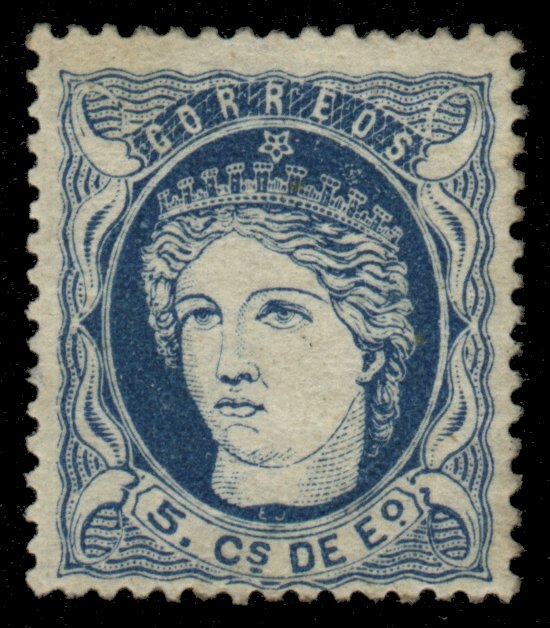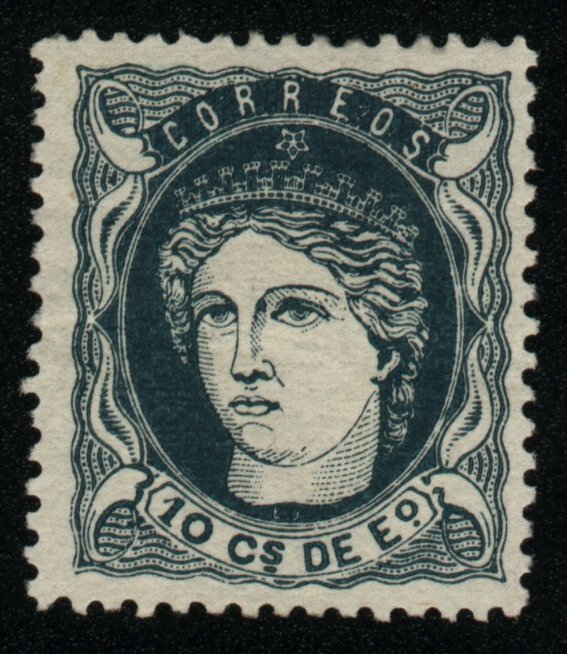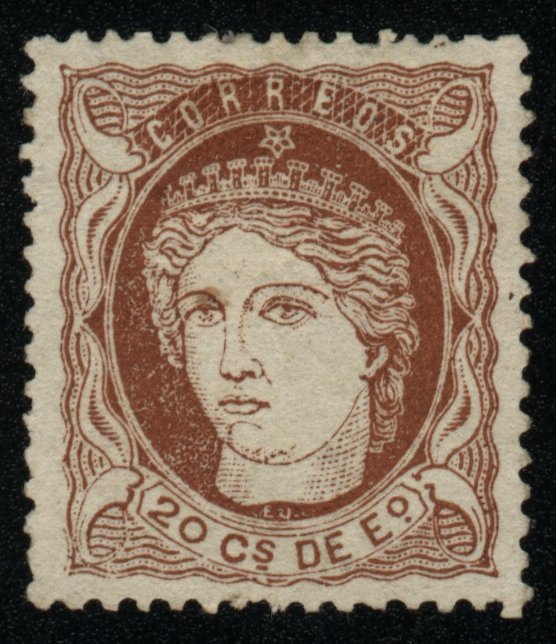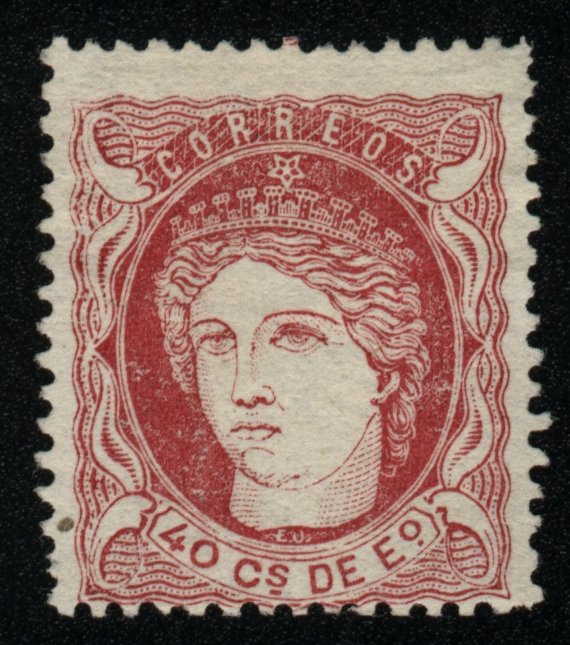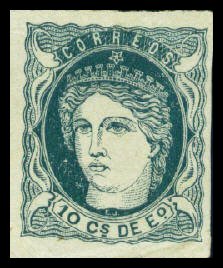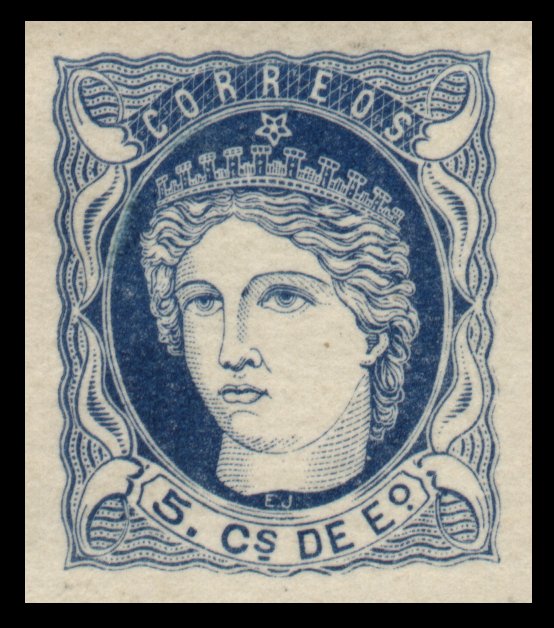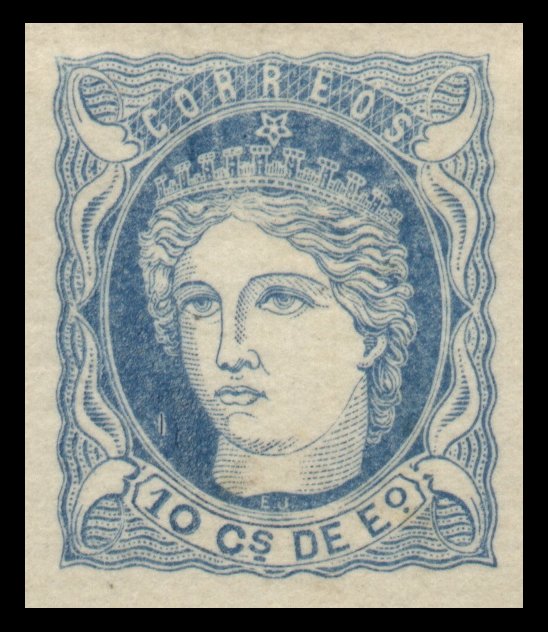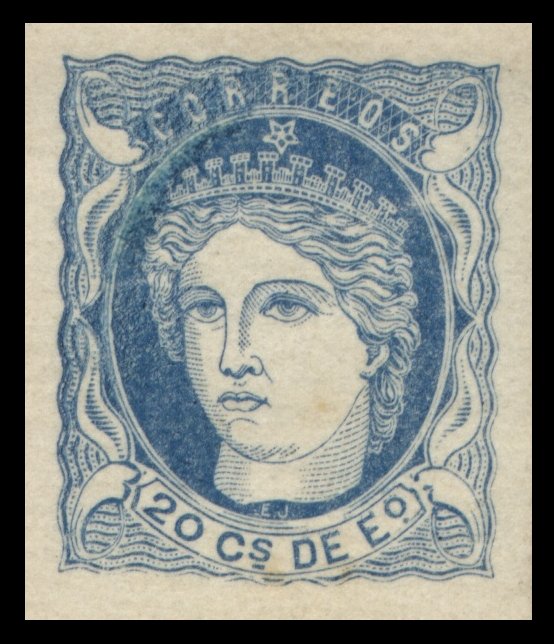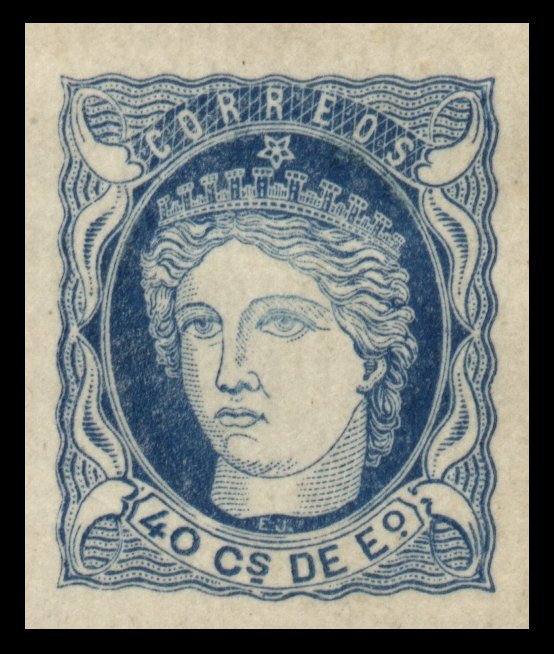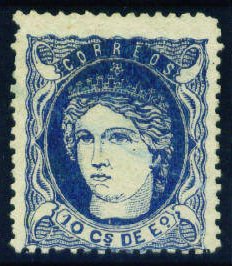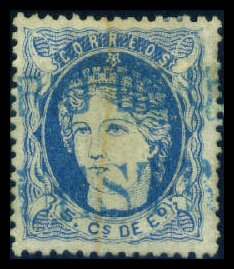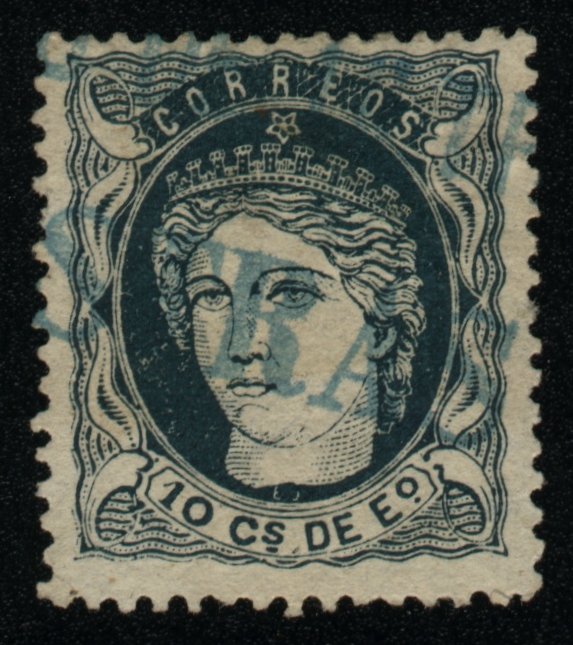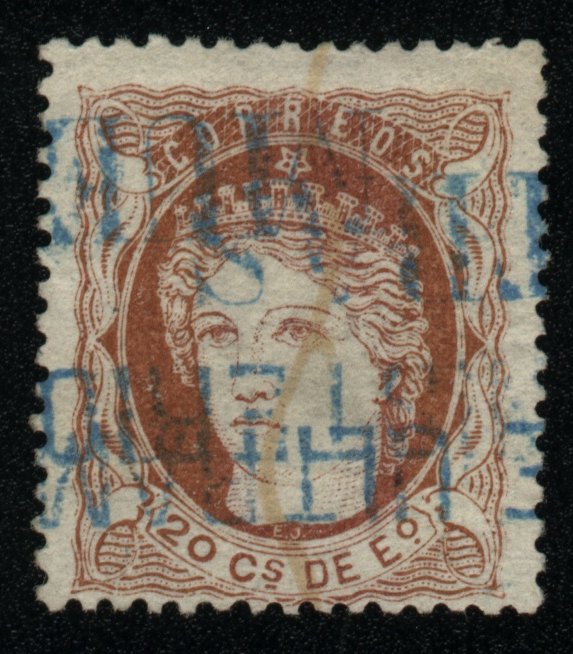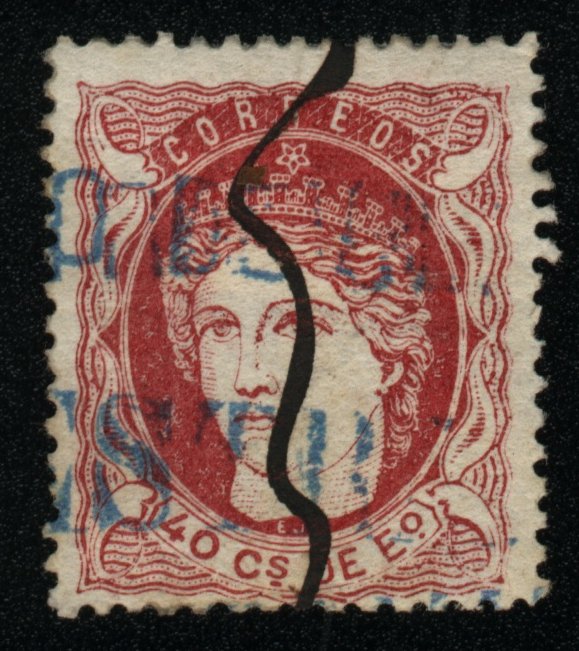King Amadeo of
![]()
![]()
|
A Royal Order dated The long-awaited new issue of stamps appeared in February 1871,
with similar designs being used for The stamps were designed by Eugenio Julia Jover,
whose initials "EJ" appear just below the base of the neck of the
effigy. The stamps were typographed on thin white
paper by the Fabrica Nacional de Moneda y Timbre, An Order dated
10-centimos de escudo, issued
in varying shades of green. (Scott #40; SG #38; Edifil #22) 20-centimos de escudo, issued
in varying shades of brown. (Scott #41; SG #39; Edifil #23) 40-centimos de escudo, issued
in varying shades of carmine. (Scott #42; SG #40; Edifil #24)
IMPERFORATED
10-centimos de escudo, imperforated
in green. (Edifil #22s)
PROOFS
10-centimos de escudo, Imperforated
proof in blue on white cardboard 20-centimos de escudo, Imperforated
proof in blue on white cardboard 40-centimos de escudo, Imperforated
proof in blue on white cardboard
COLOUR CHANGELING OR PROOF 10-centimos de escudo, Perforated
in blue on normal paper. A number of authorities and auctions have described
this as a Proof but there remains debate whether this is merely a changeling
due to natural or artificial chemical reactions or causes. FL Palmer (The
Postal Issues of the Philippines, 1912) indicates he had seen a number of
these in both unused and used condition with various cancellations. It is
unlikely that a proof stamp would have been allocated for postal usage,
further supporting the assumption that these are colour changelings.
SPECIMEN
10-centimos de escudo, overprinted
"MINISTERIO DE ULTRAMAR", "MUESTRAS" in two lines in
blue. (Types 1 and 1A) 20-centimos de escudo, overprinted
"MINISTERIO DE ULTRAMAR", "MUESTRAS" in two lines in
blue. (Type 1) 40-centimos de escudo, overprinted
"MINISTERIO DE ULTRAMAR", "MUESTRAS" in two lines in
blue. (Type 1)
5-centimos de escudo, Imperforated
proof in blue on white cardboard, overprinted "MINISTERIO DE
ULTRAMAR", "MUESTRAS" in two lines in Blue. (Type 1) 10-centimos de escudo, Perforated
proof in blue on normal paper, overprinted "MINISTERIO DE
ULTRAMAR", "MUESTRAS" in two lines in blue. (Type 1) 10-centimos de escudo, Imperforated
proof in blue on white cardboard, overprinted "MINISTERIO DE
ULTRAMAR", "MUESTRAS" in two lines in Blue. (Type 1) 20-centimos de escudo, Imperforated proof in blue
on white cardboard, overprinted "MINISTERIO DE ULTRAMAR",
"MUESTRAS" in two lines in Blue. (Type 1) 40-centimos de escudo, Imperforated
proof in blue on white cardboard, overprinted "MINISTERIO DE
ULTRAMAR", "MUESTRAS" in two lines in Blue. (Type 1) |
||||||||||||||||||||||||||||||||
![]()
Comments and Feedback Always Welcome .... Please Email
Return to Home Page
![]()
